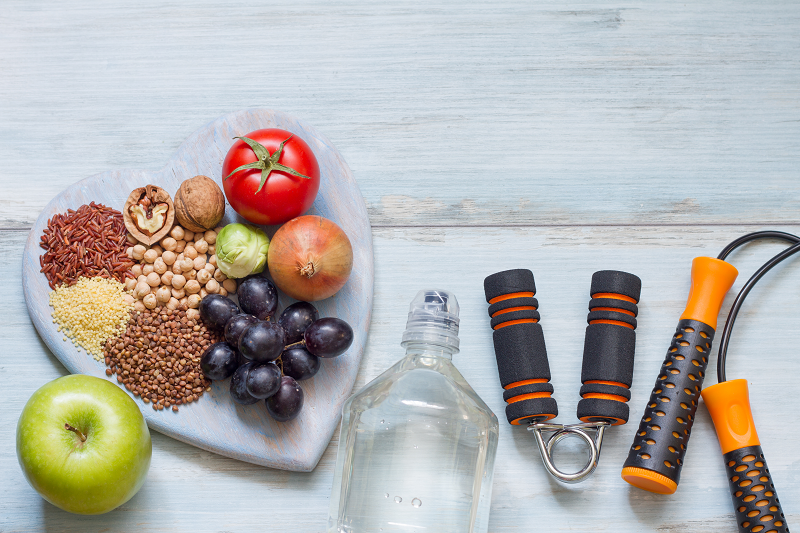
After a long and wonderful summer, the back to school season is well and truly upon us and what better time to kick-start some healthy habits. Of course, you don’t have to have a family or a partner to use this opportunity to focus on your health. It’s common for people to overeat over the relaxed summer months and/or to have drunk alcohol too frequently. But by this time of year, most of us are ready to start afresh by cleaning up our diet and lifestyle for the winter months ahead.
So read our 6 healthy back to school tips for boosting brainpower and lifting mood, with the added benefit of improved weight control:
1. Wake up early and eat a nutritious breakfast
Set the alarm a half an hour earlier, make a promise to not check your phone and have some precious ‘me-time’ before you start the day. Practise mindfulness by taking your shower and washing your teeth minfully – in other words, rather than just ‘going on automatic pilot’, slow down and concentrate on what you’re doing – feel the water wash over your body and appreciate how nice it feels.
Next, aim for a healthy breakfast that includes protein, such as scrambled eggs or greek yoghurt and a high fibre carbohydrate, like wholemeal toast. Ensure your children avoid sugary refined cereals – simply don’t buy them. Sugary cereals and refined carbs cause a quick rise in blood sugar levels, which then drop quickly. This can leave you – and your child – hungry, cranky and/or sleepy. Wholegrains are absorbed more slowly so you don’t get the sugar spike and they, along with fibre and protein, are much more likely to keep you feeling happy and satisfied until snack time or lunch.
For children who refuse to eat in the morning, coax them into a smoothie with hidden spinach/avocado and pea or hemp protein. See our ideal ‘power breakfast’ here.
2. Prepare a sugar-free snack and lunch
I absolutely have to prep my children’s lunch-boxes the night before (and I’ll often do my own then too), but you can do either. The important thing is not when but what you prepare. With processed food so pumped full of sugar in our supermarkets these days, it has become essential to know how to read a label for sugar.
The basic rule of thumb is to look under the ‘per 100 gram’ column and find ‘sugars’ (under ‘carbohydrates’), then divide that figure by four to get the number of teaspoons of sugar per serving. And watch out, manufacturers tend to underestimate a serving size (a clever ploy as the sugar looks relatively low then) but do bear in mind that your child or yourself might be having two to three times their ‘average’ serving size so you need to double or treble the sugar.
Avoid sugary drinks at all costs and don’t give your children money for the vending machine – instead, offer heal their snack options such as homemade flapjacks,
Greek yoghurt with berries, hummus or sundried tomato pesto and carrot sticks or wholemeal pitta ‘triangles’ (that they can dip) or low-sugar protein bars.
3. Cycle or walk to school (where possible)
Build activity into the school commute if you can – even if that means getting up a bit earlier and parking halfway to your destination. Did you know that – for good health – children are recommended one hour of activity each day but, shockingly, four out of five are not getting this. It’s a particular bugbear of mine. Surely it’s a no-brainer? We know that exercise improves mood and productivity…so shouldn’t it be obligatory that all children are encouraged to move each day as part of the curriculum?
The Department of Education could push it more, but schools often complain that they don’t have the facilities for indoor sports, which is obviously essential with our climate.
That means it often falls in the lap of busy, already over-stretched parents – but it is essential we don’t give up on it. Encourage – or insist – that they unplug from devices and have play time (or instruct the childminder to do the same). That means climbing trees, skipping, bouncing on a trampoline or cycling around with their friends – it all counts. And, if it’s lashing rain outside, there are still options – have a dance-off or play table-tennis (you can pick up an inexpensive net and bats in most good toy shops). Or assign housework for half an hour each day – it might not be popular but it teaches them to contribute, while keeping them active and engaged. For more ideas for indoor activity.
4. Be wary of too much screen time
Research clearly shows that excessive screen time is negative for overall health, particularly when it comes to sleep. The data suggests a strong connection between increased technology use at bedtime and decreased sleep quantity and quality. In fact, one recent study shows a significant association between television and/or mobile phone use at bedtime with elevated BMI in children and adolescents (believed to be the result of poorer sleep quantity in these children).
Overweight and obese children and adolescents were more likely to have trouble falling asleep and staying asleep than their normal BMI counterparts. These children were also more likely to be tired in the morning and less likely to eat breakfast, which are risk factors themselves for elevated BMI. If your child is old enough to have a mobile phone or other electronics, it’s essential to keep those items out of the bedroom. The bedroom should be for books and magazines/newspapers only.
Have your child hand over their electronics at least one hour before bedtime. Remember that sleep quality is a crucial factor in health and should not be overlooked – not just for children, but for you too!
5. Stock up on healthy foods (always have a list!)
When it comes to healthy lunch-box ideas, junk food or overly processed foods just don’t fit into the equation. Make it easy for yourself by stocking up on healthy foods like fruits, vegetables, wholegrain bread and cereals and lean proteins like turkey and pulses. If you’re a busy, working parent, take a few minutes during the weekend to cut up fruits and vegetables and prepare things like tuna salad or hard-boiled eggs. Buy plenty of air-tight containers for nutritious dinner leftovers.
Try to make lists – a shopping list before you hit the supermarket but also, when you get home and put everything away, a weekly planner of what you’ll eat for dinner and/or lunch each day – this saves money too! Great budget foods to include on your shopping list are tinned tomatoes, chickpeas, red kidney beans, lentils, frozen spinach, frozen peas, eggs and tins of coconut milk.
6. Manage stress
The back-to-school season can be stressful for children and parents alike, but too much stress can lead to a variety of health issues, like insomnia and sluggish immune systems. Help manage stress by talking to your children about anything that’s bothering them, and take care not to overload anyone’s schedule (including your own!).
Schoolwork and after-school activities are important, but it’s also essential to take time to relax, play and spend time as a family. If you’re child is overly-tired, consider missing a training session here and there – sometimes rest should be the priority. Make sure to have times in the diary where nothing at all is scheduled.
Try to create a relaxing environment at home – ask yourself are you rushing around too much? If so, try to slow down as your children will tend to model your behaviour. And invest in inexpensive items to have at home that will aid the sense of calm – aromatherapy oils and an oil burner, scented candles, epsom salts for the bath, Radox…all these little things can really make the difference.
There you have it, our 6 healthy back to school tips for boosting brainpower and lifting mood. Whatever your circumstances, take one of the tips above and start with that. Then, as time permits, ease the remaining tips into your routine and before long, you’ll be up and running with all 6.



